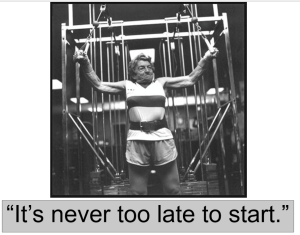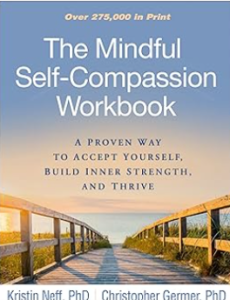
By Richard Weil, M.Ed., CDE
Transformation Weight Control
www.transformationweightcontrol.com
If you think you’re going to wake up one day and a wave of energy, commonly known as motivation, is going to wash over you and get you doing the activity you’ve been putting off, think again. And if something like that does happen, I’ll bet my bottom dollar that you’ve been thinking about it for a while, planning it, visualizing doing it, and probably have done it in the past. In my 44-year career I’ve helped people control their body weight and diabetes. For this blog, I’m going to talk mostly about planning for exercise as an example, but these ideas apply to any activity you’re struggling with and wanting to start.
This is a visual of my model for the “M” word, and I don’t mean “Motivation”.
To summarize:
You set a plan, you make it R.A.P.S., you complete the plan, you build self-efficacy, and you gain momentum. I’ll explain
I. Planning
It’s highly unlikely that any performance coach would say that planning isn’t instrumental for behavior change. It’s essential. Use R.A.P.S. to set your plan.
II. R.A.P.S. — Realistic, Achievable, Practical, and Specific
a) Realistic. If it’s been 25 years since your last workout, how realistic is it for you to do what you were doing on that very last workout 25 years ago? My favorite walking program is 5-minutes out, 5-minutes back. You start by walking for 5 minutes from your starting point, turn around, and walk back. Voila, 10 minutes to get you started! That’s realistic.
b) Achievable. Can you complete the plan you set for yourself? If you set 30 minutes on a stationary bike at high intensity, and you haven’t been on the bike for more than year, then it doesn’t seem particularly achievable to me. Why not start with 10 minutes at a moderate intensity? Or what if you’re an all-or-nothing thinker and you set a plan to work out 7 days in one week, even though you have a very busy schedule. That’s what all-or-nothing people do. Instead, why not set a plan for 3 days, and then anything more is a bonus. Consider this. All-or-nothing folks will set a plan for 7 days, they do 5, and considerate it failure. Had they set a plan for 3 days, and did 5, then it’s a major victory. Same 5 days of exercise, just one is success and one is failure; it’s all a matter of perspective for all-or-nothing thinkers.
c) Practical. Are you really going to wake up at 5:30 am and get on the treadmill? Or get to the gym after work when you know you work until 7:00pm and are dog-tired at the end of the day? Sometimes it’s best to start on the weekend, or any other day when you’re not working or otherwise very busy, and start your new exercise plan for when you have more time. You can always add more later.
d) Specific. Write down your plan or put it on the calendar on your device (maybe even set an alarm as a reminder). For specificity, write down the following at beginning of your week:
1) The activity that you’ll do.
2) The day or days you’ll do it.
3) The number of minutes you’ll do it for.
4) The time of day, or contextual cue. Time of day for some people is either hard to pin down, or they are resistant with every molecule in their body to set a structured time which leaves them feeling restricted, being told what to do, and rebelling. So, instead, use a contextual cue, such as “before breakfast”, or “after dinner”. That strategy will give you the wiggle room so you don’t feel restricted, pinned down, and being told what to do.

III. Completing the Plan
The probability of completing your plan is higher when you set your plan using R.A.P.S.. One of the advantages to completing your plan is that you end up working out and then you’re better off for it mentally and physically. The second advantage is building self-efficacy.

IV. Building Self-efficacy
Self-efficacy can be summarized in just two words, “I can”. If you believe you can, your self-efficacy for whatever behavior you’re planning to change is high, which increases the probability many-fold that you will indeed follow though.
Consider this. If you ask someone if they will do something, and they say, “I can”, then their self-efficacy is high and you will tend to believe them, as opposed to if they say “well, maybe I can”. The best way to build self-efficacy is to set plans and achieve them, own the victory, and pat yourself on the back for a job well done. Really, research shows that congratulating yourself and patting yourself on the back builds self-efficacy and increases the likelihood of continuing with the activity.

V. Momentum
Here’s where the model comes together. First, you set plans according to R.A.P.S., then you complete the plan, then your self-efficacy rises since you’ve proven to yourself that “I can”, and then momentum carries you forward because your behavior has been positively reinforced by the success of the exercise. All human beings like positive reinforcement. You also get a little boost from physics. Sir Isaac Newton’s first law of motion, also known as the law of inertia, states, “a body at rest tends to stay at rest, a body in motion tends to stay in motion”. You can call “momentum” “motivation” if you like, but in reality, by following though on the model, you’ve built momentum. Whatever you call it, what’s clear from the model is that momentum, or motivation, doesn’t come first; rather, it’s the result of successfully following through on the four important steps before it, starting with planning. That’s why I started this blog by saying good luck if you think one day you’re just going to wake up with motivation washing over you, and that’s why the title of this blog is “Motivation? – Hogwash!”
Now, the other part of Sir Isaac Newton’s first law of motion that “a body in motion tends to stay in motion” has a caveat to it. The rest of the law states that a body in motion will remain in motion “unless an external force acts upon it”. Let’s think of the external forces that threaten your exercise inertia and momentum as impediments or barriers to action. And there are plenty of them. Let’s identify those exercise impediments first:
* I have no time
* It’s boring
* It’s too hard
* It hurts
* I’d rather do anything else
* It’s too expensive
* I don’t like to sweat
* I’m embarrassed
* I don’t know what to do.
ANY OF THESE SOUND FAMILIAR?
Now let’s have a look at strategies that can defeat these impediments, the “external forces” that Isaac Newton talks about, and build and keep your your inertia and momentum high.
Inertia Building Strategies
Here’s a list of inertia building strategies that I have not mentioned yet. It is not an exhaustive list, but it’s many of the most important strategies that I think will help you maintain your inertia and momentum. They are intended to empower you.
1) Define your core values. What is it that is most important to you? For me, related to exercise, my main core value is being self-sufficient, and that’s dependent on physical strength. I never want to be dependent on others to push me in a wheel chair, help me off the toilet, or any other of the indignities of growing older. I want to be self-sufficient for as long as I live, so I am always going to exercise. What are your core values related to exercise? I encourage you to search your soul and discover them. Maybe it’s self-sufficiency, maybe it’s health, or maybe it’s something else. Whatever it is, find it, define it, declare it, and live it. That will keep your inertia high and momentum moving when times get tough. And guess what? It’s never too late to discover your core values, ad it’s definitely never too late the start to exercise!

2) Own your victories. It never amazes me anymore, but when it comes to losing weight and preventing regain, people almost never take ownership of their victories. In our program I look at everyone’s weight each week and send emails for support, encouragement, guidance, a general check in, or sometimes I ask (if they lost weight), what they attribute it to. And you know what? They don’t always know what they did to lose weight. In fact, sometimes they say the scale must have been wrong! I say bunk. They’re always willing to take the blame for gaining weight, and somehow the scale is always right when they gain, but for some reason (probably all-or-nothing thinking or lack of self-compassion), they simply cannot take credit for the victory of losing weight. Not owning your victories is a sure-fire way of depleting you, physically and psychologically, and thus losing the inertia that resists the barriers and impediments that will cripple your momentum.
3) Ask for help. All the strategies that go into losing weight and preventing regain can be threatened at one time or another, and this can lead to isolation, shame, self-loathing, and becoming a victim of weight stigma. There’s an idea called “common humanity”. It means accepting that we are all humans and we face similar problems. When it comes to weight control, after my 44-year career (and still going strong!), I know that isolation and all the rest I mentioned are enormous sticking points that definitely threaten inertia. Let me tell you, YOU ARE NOT ALONE. There truly is common humanity. You belong to the human race like everyone else, so ask for help when you need it. You no longer have to go it alone. In our program, we strongly encourage participants to ask for help, and especially so since we run groups with people who are like-minded, have suffered similarly, and “get it”. So why not take advantage of the opportunity and keep the inertia and momentum going?
4) Pay attention to your language. Using language such as “I have to”, or “I am supposed to”, or “I should”, or “I must”, are examples of cognitive errors in cognitive behavior therapy. They fall under the heading of “demandingness”. Here’s a simple exercise you can do at home to understand and defeat these negative thoughts. Close your eyes, get control of your breath, stay calm, and then repeat to yourself “I must, or I should, or I have to, or I am supposed to lose weight or exercise”. Tune in and feel how that resonates in your gut, in your soul. Then say to yourself, “I want to lose weight”, or “I want to exercise to stay strong”. Now focus on how those thoughts resonate in your gut. If you’re like the thousands of people who I have asked to do this exercise, you’re going to find that the demandingness of the “I should” statements leave you feeling angry, or rebellious, or resentful, or resistant, whereas, stating “I want” gives you agency, it provides you with the control you need to get the job done with confidence and self-efficacy. There’s no emotional arousal or negative thoughts, you have simply declared what you want. Language is critical to keep the inertia and the momentum going.
5) Keep track. Once you have your plan written down, keep records of how you do. Here’s an example of checking off when you did your exercise. Humans like positive reinforcement. This does that. 
6) Self-compassion. Self-compassion, or lack of it, is an enormous sticking point to moving forward with behavior change. You are unforgiving of errors, you beat yourself up, and you are generally just unkind to yourself. If you had to boil self-compassion down to just one idea, it would be this: would you ever talk to a dear friend in need or who made a mistake the same unkind way that you talk to yourself when you make a mistake or are in need? No, you would not. Self-compassion is beyond the scope of this blog, it’s an entire field all by itself. But if lack of self-compassion is a sticking point for you and cuts into your inertia and momentum, then I recommend “The Mindful Self-Compassion Workbook: A Proven Way to Accept Yourself, Build Inner Strength, and Thrive” by Kristin Neff and Christopher Germer, and “Self-Compassion: The Proven Power of Being Kind to Yourself” by Kristin Neff.


7) Perfectionistic thinking. How are you ever going to maintain your inertia and momentum if every time you succeed at something but think it’s never enough. I create a quote that captures this issue perfectly, “No one ever feels as good about losing a pound as they feel bad about gaining a pound.” That’s for sure going to deplete you and stop your inertia and momentum.
8) Get lots of sleep. No kidding, lack of sleep is like torture. It lowers your resistance, zaps your energy, depletes you physically and emotionally, impairs your cognitions, and does what we call, “disinhibits” you. It means that you lose the ability to control impulses or stop from participating in behaviors inconsistent with your goals. In essence, you lose the ability to inhibit yourself from behaviors that could harm you, or deplete your inertia and momentum.
9) Visualize. Run it through your head. Over and over. Imagine yourself exercising. Visualization is powerful and used by athletes and many others who perform at peak and elite levels, whatever the endeavor. If you want to keep up your inertia and momentum, visualize the behavior.
10) Resilience. In our program, we believe resilience is the most important factor in losing weight, preventing regain, and pretty much keeping up the inertia and momentum for just about all behavior change. It comes down to this, in the words of the psychologist Dr. Albert Ellis. “We’re all human, we’re all fallible, and we’re all going to make mistakes.” The successful behavior changers, the ones who keep the inertia and momentum going, are the ones who rebound from adversity and get right back on the path to follow through on their plans and keep the inertia and momentum going. That’s resilience, and they do it by practicing self-compassion, ignoring perfectionistic thoughts where only perfection will do, don’t beat themselves up when they make a mistake, and they don’t relapse, only to wake up days, weeks, months, or even years later, wondering what happened. They bounce back quickly.
11) Consider the consequences. Are you a negative or positive thinker when it comes to maintaining inertia and momentum? For me, when it comes to exercise, I consider the consequences of not doing it. I know all the benefits of exercise, right down to the cellular level, but that rarely gets me out of bed and to put my feet on the floor at 6:30 in the morning to get on my bike for my morning ride. Rather, I think about the negative consequences if I don’t. I’ll feel sluggish, irritable, and disappointed with myself for not taking care of myself. Those are unpleasant consequences that I would rather avoid. And I know from experience just how unpleasant they can be. I recommend that you find out if you are a negative or positive thinker when it comes to the consequences of your actions, and maintaining inertia and momentum.
12) Intention Implementation. There’s been a great deal of research on this. It boils down to “if-then” statements, and applies to setting your plan. It’s a simple affair. Think of it as contingency planning. This is a perfect example. You set your plan this way: “IF I plan on walking outside in the morning, but it’s raining, THEN I am going to either carry an umbrella, wear rain gear, or pedal on my indoor stationary bike.” Research shows that when people use if-then planning, they lose more weight, exercise more, and make more behavior changes. Having that kind of contingency planning is certainly going to keep your inertia and momentum going.
13) Behavior Activation. Well, I’m going to finish with this one. It’s a major issue for keeping up inertia and momentum, but so important that it could be five pages all on its own. So, for now, I’m going to boil it down to one simple question and an even simpler response until I get around to writing the blog on it.
Question: Are you willing to take action and do something even when you don’t feel like it?
Response: Where is it written that you always have to feel like doing something to do it? Is that how your life really is? You only do things you really feel like doing? If that’s the case, then I want your life!!!
So, that’s my take on the hogwash of motivation. Instead of waiting for that wave of “motivation” to wash over you, refer to my model that I presented in the beginning, using the words “inertia” and “momentum” instead of “motivation”. I’ve posted it here again for your convenience. Remember… planning comes first, and then after a series of steps, the inertia and momentum kick in. Inertia and momentum don’t start first and get the ball rolling, they don’t happen spontaneously, all on their own. It’s up to you to light the fuse and get the inertia and momentum working.

I welcome your comments!
© 2024 Richard Weil All Rights Reserved